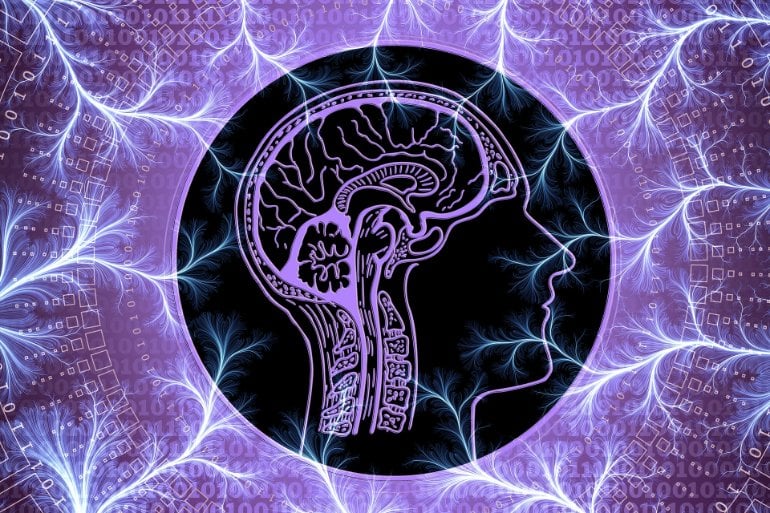Summary: Loperamide, an anti-diarrhea medication, induces autophagy in glioblastoma brain cancer cells.
Source: Goethe University
The research group led by Dr Sjoerd van Wijk from the Institute of Experimental Cancer Research in Paediatrics at Goethe University already two years ago found evidence indicating that the anti-diarrhea drug loperamide could be used to induce cell death in glioblastoma cell lines. They have now deciphered its mechanism of action and, in doing so, are opening new avenues for the development of novel treatment strategies.
When cells digest themselves
In certain types of tumour cells, administration of loperamide leads to a stress response in the endoplasmic reticulum (ER), the cell organelle responsible for key steps in protein synthesis in the body. The stress in the ER triggers its degradation, followed by self-destruction of the cells. This mechanism, known as autophagy-dependent cell death occurs when cells undergo hyperactivated autophagy.
Normally, autophagy regulates normal metabolic processes and breaks down and recycles the valuable parts of damaged or superfluous cell components thus ensuring the cell’s survival, for example in the case of nutrient deficiency. In certain tumour cells, however, hyperactivation of autophagy destroys so much cell material that they are no longer capable of surviving.
“Our experiments with cell lines show that autophagy could support the treatment of glioblastoma brain tumours,” says van Wijk. Glioblastoma is a very aggressive and lethal type of cancer in children and adults that shows only a poor response to chemotherapy. New therapeutic approaches are therefore urgently required.
The research group led by van Wijk has now identified an important factor that links the ER stress response with the degradation of the ER (reticulophagy): The “Activating Transcription Factor” ATF4 is produced in increased amounts both during ER stress and under the influence of loperamide. It triggers the destruction of the ER membranes and thus of the ER.
Anti-diarrhea drug triggers cell death in glioblastoma cells
“Conversely, if we block ATF4, far fewer cells in a tumour cell culture die after adding loperamide,” says van Wijk, describing the control results. In addition, the research group was able to detect ER debris in loperamide-treated cells under the electron microscope. “ER degradation, that is, reticulophagy, visibly contributes to the demise of glioblastoma cells,” says van Wijk.
The team also showed that loperamide triggers only autophagy but not cell death in other cells, such as embryonic mouse fibroblasts. “Normally, loperamide, when taken as a remedy against diarrhoea, binds to particular binding sites in the intestine and is not taken up by the bowel and is therefore harmless”.
Mechanism of action also applicable to other diseases
The loperamide-induced death of glioblastoma cells could help in the development of new therapeutic approaches for the treatment of this severe form of cancer. “However, our findings also open up exciting new possibilities for the treatment of other diseases where ER degradation is disrupted, such as neurological disorders or dementia as well as other types of tumour,” says van Wijk.

However, further studies are necessary before loperamide can actually be used in the treatment of glioblastoma or other diseases. In future studies it has to be explored, for example, how loperamide can be transported into the brain and cross the blood-brain barrier. Nanoparticles might be a feasible option. The research team in Frankfurt now wants to identify other substances that trigger reticulophagy and examine how the effect of loperamide can be increased and better understood.
Funding: The research group led by Sjoerd van Wijk is funded by the Frankfurt Foundation for Children with Cancer (Frankfurter Stiftung für krebskranke Kinder) and the Collaborative Research Centre 1177 “Molecular and Functional Characterisation of Selective Autophagy” funded by the German Research Foundation (Deutsche Forschungsgemeinschaft). The work is the result of collaboration with Dr Muriel Mari and Professor Fulvio Reggiori (University of Groningen, The Netherlands) and Professor Donat Kögel (Experimental Neurosurgery, Goethe University).
About this brain cancer research news
Source: Goethe University
Contact: Markus Bernards – Goethe University
Image: The image is in the public domain
Original Research: Closed access.
“ATF4 links ER stress with reticulophagy in glioblastoma cells” by Sjoerd van Wijk et al. Autophagy
Abstract
ATF4 links ER stress with reticulophagy in glioblastoma cells
Selective degradation of the endoplasmic reticulum (ER; reticulophagy) is a type of autophagy involved in the removal of ER fragments. So far, amino acid starvation as well as ER stress have been described as inducers of reticulophagy, which in turn restores cellular energy levels and ER homeostasis. Here, we explored the autophagy-inducing mechanisms that underlie the autophagic cell death (ACD)-triggering compound loperamide (LOP) in glioblastoma cells. Interestingly, LOP triggers upregulation of the transcription factor ATF4, which is accompanied by the induction of additional ER stress markers. Notably, knockout of ATF4 significantly attenuated LOP-induced autophagy and ACD. Functionally, LOP also specifically induces the engulfment of large ER fragments within autophagosomes and lysosomes as determined by electron and fluorescence microscopy. LOP-induced reticulophagy and cell death are predominantly mediated through the reticulophagy receptor RETREG1/FAM134B and, to a lesser extent, TEX264, confirming that reticulophagy receptors can promote ACD. Strikingly, apart from triggering LOP-induced autophagy and ACD, ATF4 is also required for LOP-induced reticulophagy. These observations highlight a key role for ATF4, RETREG1 and TEX264 in response to LOP-induced ER stress, reticulophagy and ACD, and establish a novel mechanistic link between ER stress and reticulophagy, with possible implications for additional models of drug-induced ER stress.






